The 50 States Project is a series of candid conversations with interior designers across the country about how they’ve built their businesses. This week, Aspen, Colorado–based designer Kristin Dittmar Doremus tells us how the small town she grew up in became an elite real estate hub, why she has a ‘no bad apples’ policy and how she navigates the shipping challenges of mountain living.
Did you always know you wanted to be a designer?
I was always super creative when I was younger. My dad’s [girlfriend], who was basically like my stepmother, had a huge workroom and made pillows and draperies, so I would go in there and get all of her fabric to make stuff. At first, I wanted to be a fashion designer, but my dad told me that I wouldn’t ever make a living doing that, and he got me a job at the John Brooks showroom in Denver. I worked for them for four years—I started folding fabric samples in the back of the showroom, which was honestly the best thing for me, because I really learned the business from the inside out. While I was there, I grew to really love the industry, and that’s why I pursued a career in design.
You studied design in college. Did you have a clear sense of what you wanted to do after graduation?
I always wanted to do residential work—I dabble a little bit in [commercial now] if people ask me to do a restaurant or a clothing store, and I love doing that too, but I love high-end residential work, and all of the materials and mediums that I get to use. And because of working at the showroom, I already knew the products—all the lines and the manufacturers—so well.
That’s such amazing knowledge to have as you’re entering the workforce.
It was amazing, and I wouldn’t have done it any other way. I also worked for Wiseman and Gale Interiors in Arizona for two years while I was in college. When I moved back to Aspen after graduation, it was 2007, and I got a job working for a super talented young designer in town. His boyfriend was doing the accounting for the business, but otherwise it was just us. He was always like, “I’m never gonna fire you,” but he was also never really around—he was always in Texas, working with some clients there. And then he let me go two weeks before Christmas, but I got to keep the clients I had been working with in town. I tried to get a job working for another designer, but nobody was hiring in 2008, so I just took that work and built from there.
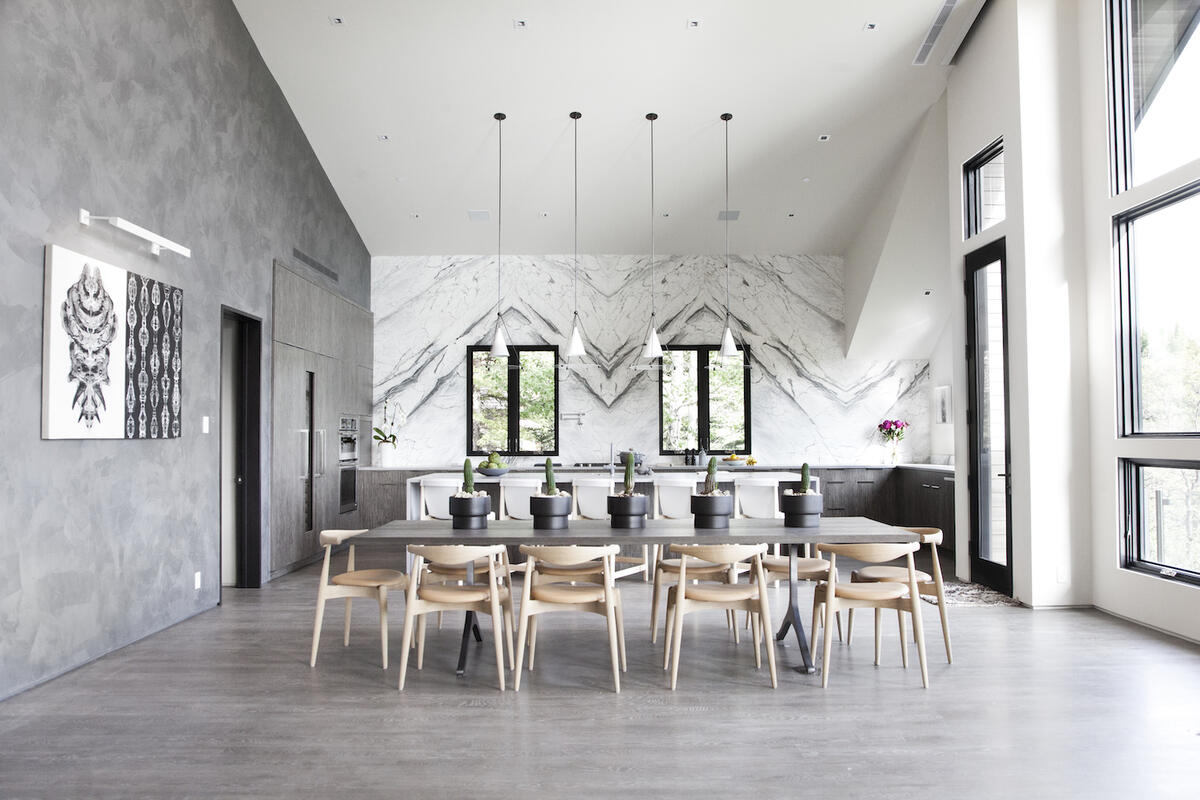
Bookmatched stone makes a striking statementCourtesy of Brooke Casillas
What does it look like to build a business as a local in a town where so many people bring their interior designer from somewhere else?
I was born and raised here, so I started by working with the developers out here, and then by getting to know the realtors. Working with one of the developers in particular was key, because they gave me a lot of creative freedom to do what I wanted, and the houses sold. They made tons of money on these houses that I designed for them—it makes me cry a little bit when I think about it—but it was so helpful because it let me photograph my work and get it out there. That’s how I was able to establish “This is who I am, and this is what I do” so quickly, and people really liked it.
What were you bringing to these developers that was different in the marketplace?
I think I just had a fresh take on mountain interiors. There’s that big-log look, which is always going to be here, and then there’s that really stark mountain interior that feels cold, and I found a midway point. My whole thing is I love snow. It’s snowing here right now—it’s so beautiful and white, and I’ve tried to bring that into my designs through [elements like] beautiful white plaster walls and lighter interiors. I want it to be light and open and happy.
When you were working with developers, were you just selecting finishes or were you also furnishing the interiors?
It was everything because the realtors were telling them that they could sell the house better and faster if they had furnishings. When we did that, obviously the furniture budget wasn’t as high as you would like, but you could still do some stuff.
I did that work for about four years, and then I got busy with my residential clients. The developer work also didn’t pay a lot—with my clients, I can set the fees that I want—but I do miss the creative freedom of it sometimes.
Did you get leads from the people buying those homes, as well?
A ton. I still get calls.
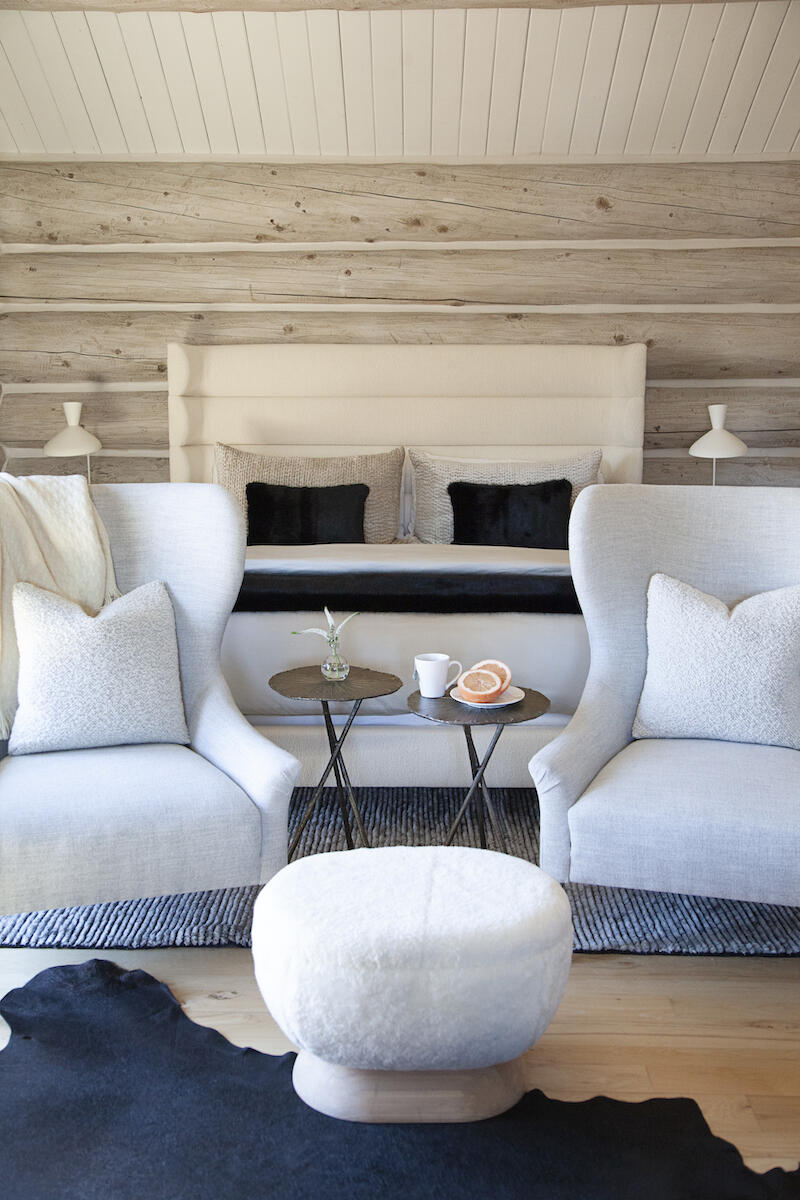
A cozy bedroom offers a fresh update to the traditional mountain house lookCourtesy of Brooke Casillas
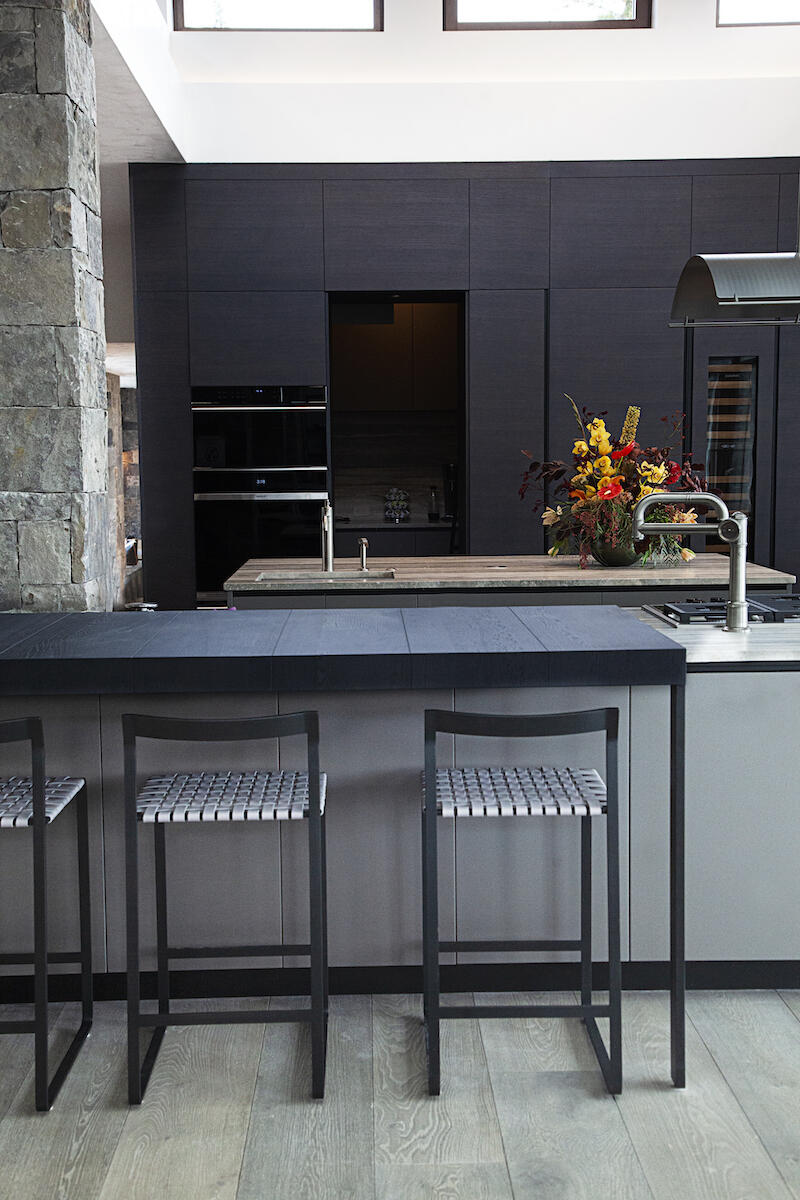
A sleek kitchenCourtesy of Brooke Casillas
Left: A cozy bedroom offers a fresh update to the traditional mountain house look Courtesy of Brooke Casillas | Right: A sleek kitchen Courtesy of Brooke Casillas
How many projects are you typically working on at a time right now?
Right now, I have three full-time team members and a purchasing staff. But the number of projects depends on the size of the projects. We have one project right now that’s ginormous, so there have been three people working on it at all times. But projects ebb and flow—we usually have between eight and 12 at a time.
What does your team look like today?
I call my job the creative director, and I’m responsible for bringing in new business. Kelsi Denney is the lead project manager, and she’s been with me for almost six years. I’ve had some other employees in that [period], but now I have Annie Wilkerson, who’s a project manager, and a design assistant.
We also work with a purchaser, who has been with me for nine years. At first, she was just doing accounting, but as I was getting busier, she was like, “I can do proposals for you, too,” so she started doing that, which rolled into her doing all the purchasing as well. She has a team that works for her, and she works for other firms as well, but I keep her pretty busy.
How did it feel to give all that away—especially purchasing?
It was a slow process. Really, it took me realizing that when she does it, issues don’t come up. I really have to credit her team with that. It was just running way smoother when she was taking care of all that, so I made an executive decision that she would move forward with all of that stuff.
So once you set your mind to it, delegating is no problem for you?
I would tell anybody to give something away that they’re not good at. I’m creative, not a numbers person. But our purchaser was like, “Oh, I love doing proposals.” Great, because I don’t. I review everything with her—we triple- and quadruple-check everything to find problems before they happen, so I’m involved in that way. But I would say if somebody struggles with something, just give it away.
How do you decide which projects are a good fit for your firm these days?
I’ve become a lot pickier lately. We’re basically only taking on full-scope high-end residential work, either remodels or new builds.
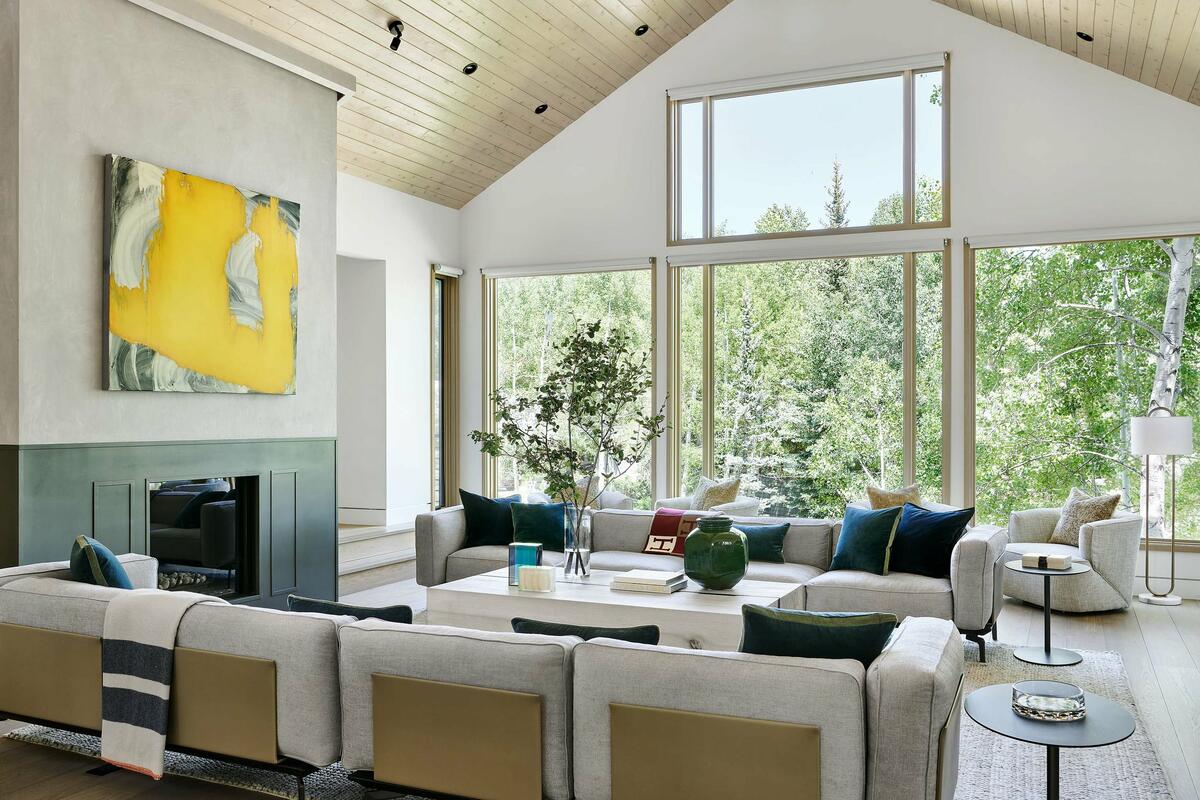
A living room is centered around gathering by the fireplace and expansive views of the outdoorsCourtesy of Brooke Casillas
You were born and raised in Aspen, but is the work you’re doing for locals, or are they vacation homes? And how does that change your approach?
Most of them are secondary homes. But through the pandemic, we worked on a few houses that started as vacation homes that are now the client’s full-time homes, which really changes their needs. In your primary home, both people in a couple need an office or computer space—that’s really become a thing. A question we now ask everyone is: “Do you need a Zoom background?” And clients are now very conscious about home gyms.
Are there other things people are looking for that are specific to Aspen?
Ski lockers, and people really like boot warmers—the best one on the market is tall, so you put it in your garage, and you can fit a bunch of boots in it. Or sometimes we design them so they go underneath a bench, and the bench just has to be a little bit higher. That kind of stuff is pretty specific to a ski town.
Also, everything these days is heated. You can have a battery and heat anything—gloves, vests, socks—so I put as many traditional and USB outlets in mudrooms as I can. I put them everywhere—even in closets now because everybody wants to plug everything in these days.
I know your local housing market has shifted pretty significantly during the pandemic. How has that impacted your work?
There’s been a whole new demographic of people that moved out to the mountains. Land and home prices here are 40 percent higher than they were before the pandemic. It’s a lot more expensive, so we have an even higher-end clientele than we did before. Sometimes it’s great, but sometimes they’re tough.
What’s especially hard in Aspen is the labor. The cost of living is so high here that to actually get labor is so difficult and so expensive. [Tradespeople] are coming from an hour and a half or two hours away. But some clients are not understanding—I’ve had people come from Los Angeles, and they’re like, “Why is it so expensive? What’s going on here?” And I’m like, “Well, that’s the nature of building in a mountain town.”
Another issue is that shipping to this climate is not easy. It’s more expensive, and things come damaged more often—I’d say at least 40 percent of my items come damaged. We have to charge for all the shipping and tracking because so much goes into it. And even our receiver has a hard time getting good employees. It doesn’t just, like, appear like it would if you were in a city. It’s exhausting. People don’t understand that it is a different beast to ship things here.
How else has the influx of new homeowners changed your community?
There have always been people here who [weren’t putting down roots]. When I was young and single and going out, it was so fun—everybody would come for Christmas and have the biggest parties. Now, having a family here and kids in the school system, it’s more difficult. Sometimes I’m like, “When are these people going to leave? I just want to find a parking spot.” But there are two ways to look at it, because we also wouldn’t have the life or the businesses we have without them, you know?
And through COVID, a lot of people have actually moved here and started setting roots here, which has really changed the community dynamics. Somebody just wrote an article in Outside magazine about the gazillionaires that have taken over our town, and it’s very true to this community. The next vote [for the city council] will be the first since this all started—that will be interesting. It doesn’t really feel like a small town, like it used to.
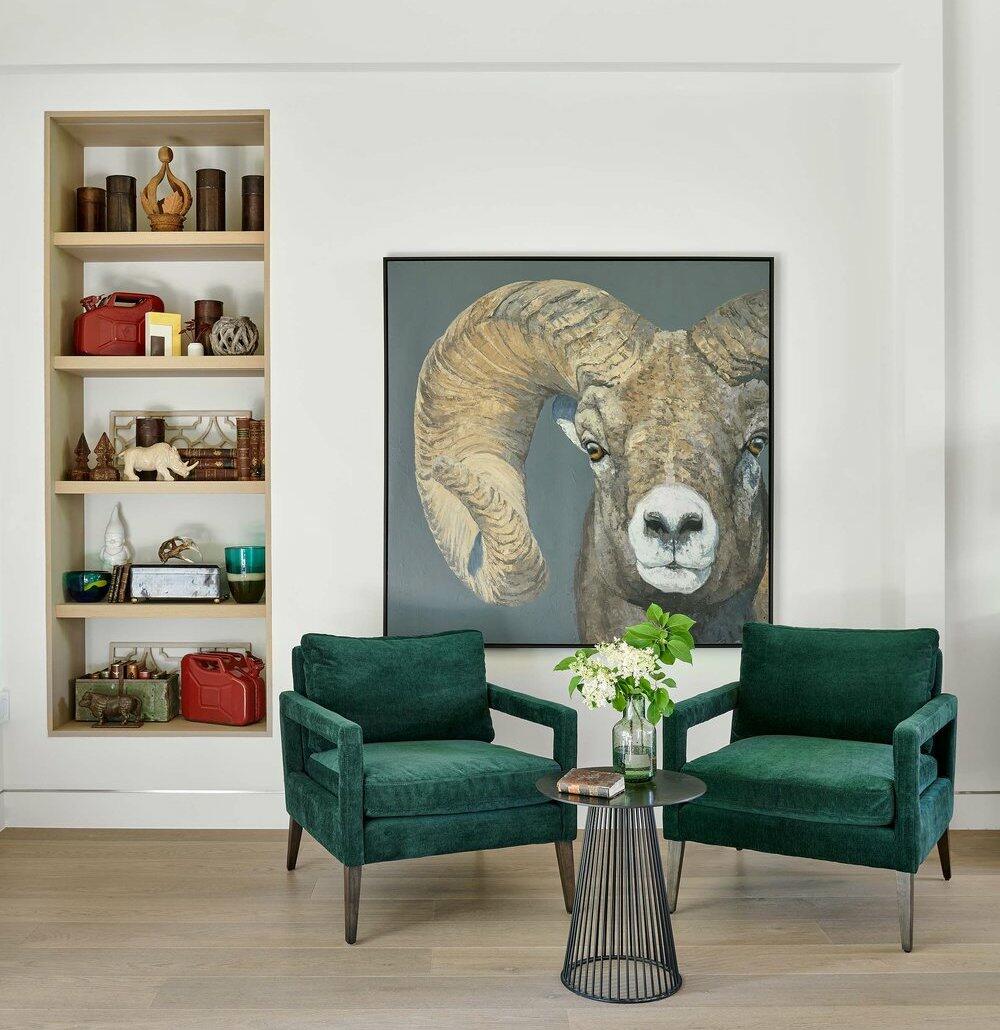
A colorful corner invites an intimate conversationCourtesy of Brooke Casillas
Where do you shop for your clients?
Locally, John Brooks has a showroom here, which is a great resource, and there are a few local artists that I like to work with. I have a workroom in Boulder and another in Utah. I go to the Denver [Design Center’s market day]. And then I also go to L.A. and New York, and to High Point to see the quality of things that are coming out.
I just went to Paris for that market for the first time this year. I have a 4-year-old and a 2-year-old—I had a baby during the pandemic and I haven’t traveled much, so I definitely had that wanderlust in me. Travel is so inspiring for design, and I just really wanted to go this year. I think it’s important moving forward to start going to these higher-end European shows, since that’s where everybody wants everything from. It was magical, to be honest—and also, I was away from my two kids and I slept, and it was great.
How have you approached the finance side and billing?
We bill monthly. We charge hourly for everything, and then do a markup on furniture.
You’re charging hourly for the purchasing and project management phases, not just the design. Did you always do that, or did that stem from worsening shopping conditions during the pandemic?
We started that in August 2020. So much was going into the tracking that I was losing money. The design firm that I worked for never did that, so I didn’t either [when I started my firm], but looking back, it was a mistake. Now, I think people need to be paid for their time.
Some clients are not understanding—they’re like, “Why do I have to pay for everything?” And I’m like, “Well, this is what it takes to put these projects on.” It’s expensive to have an office and run a business in this town, and I need to be able to cover all of my costs. I need the comfort in knowing I’m making enough money that I’d be able to [solve any problems that arise] and still be able to run my business.
How do you talk about it with the clients who push back?
It’s interesting that you ask because that has been a big topic in the office lately: how to better approach that upfront with clients. We’ve been experimenting with running through the contract with clients. I always say that we charge hourly, but I don’t think clients always read the contracts to know what that means. Now, we have a new push to have a meeting to review the contract section by section, to make sure there are no surprises.
Like, you signed the thing.
I’ve actually hired somebody to help me fine-tune those processes so we don’t have those issues again—[or at least] try to problem-solve ahead of time instead of after.
Has it been helpful so far?
It takes so long to troubleshoot stuff like that. You’re gonna have to ask me that in, like, two years when these projects are finishing.
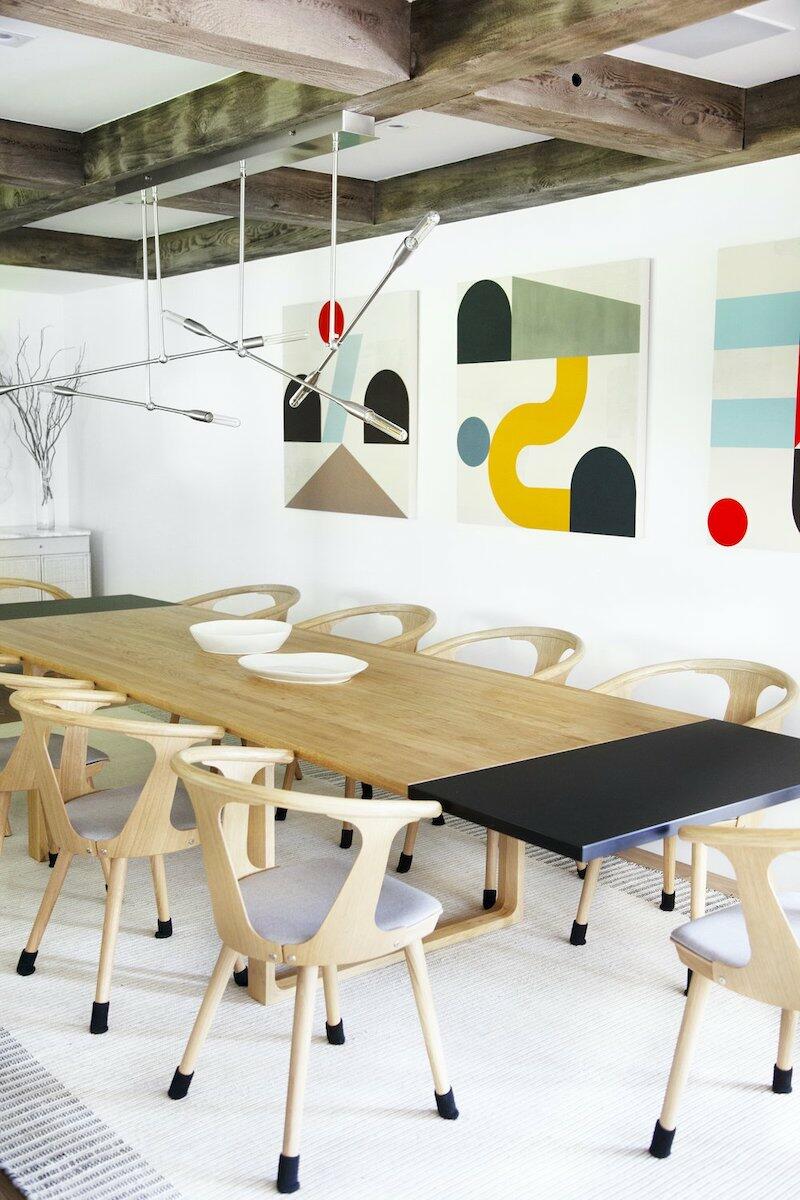
Playful artworks enliven a dining roomCourtesy of Brooke Casillas
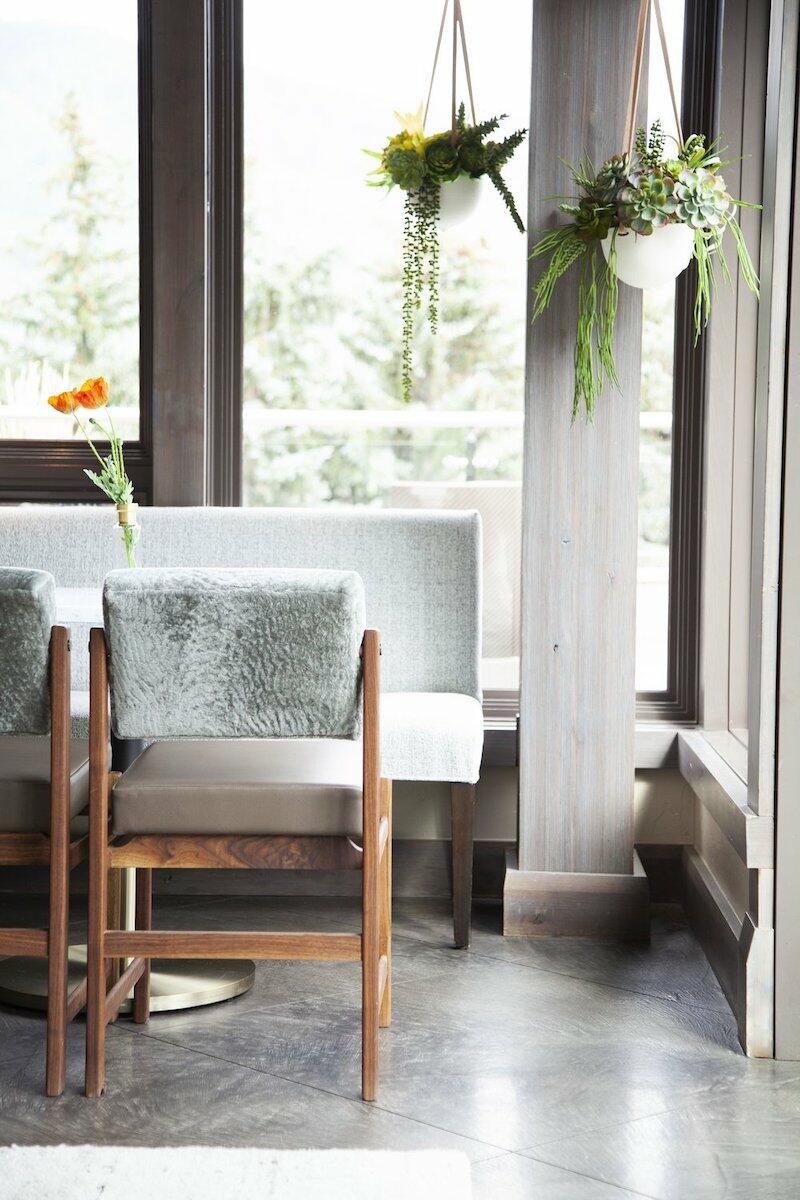
Indoor greenery echoes the verdant viewCourtesy of Brooke Casillas
Left: Playful artworks enliven a dining room Courtesy of Brooke Casillas | Right: Indoor greenery echoes the verdant view Courtesy of Brooke Casillas
You mentioned how hard it is to run a business in a mountain town. What about your employees? What does it take to keep a happy team?
That’s also a work in progress. I get them a full ski pass, and they have insurance. And I just hired an HR consultant to help me sit down with the team to talk about goals or any issues they’re having. But that literally just started about two weeks ago. One essential thing is to make sure everybody clicks. You can’t have a bad apple—I’ve had one before, and it almost ruined the whole team.
Where do you see the biggest opportunity to grow?
I’m trying to grow as a business owner—that’s why I’ve brought in this consultant to help me through it. And I hope I can grow the business within Aspen, to start doing more projects midvalley, which is still high end, but not as high end as where we are now. I think that’s a way to grow in this market. The houses downvalley are still $2 million to $4 million—they’re not the $30 million to $60 million houses, but it’s still a house.
What do you know now that you wish you had known when you started your business?
I was so young and motivated when I opened my business, but I would warn my younger self to be a little bit more careful about cozying up to clients and keeping [boundaries in] your business relationships, because I always became friends with them. Some of my first clients are still my closest friends—like, I’m going to dinner with them this week. But now, I really try to keep a friendly working relationship until the project is done. After that, we can be friends. These are emotional projects—there’s a lot of money involved, and it’s their home—and I put so much love into the design that I’m emotional about it, so I think it’s really healthy to keep boundaries around those relationships.
Another thing that I have learned through this pandemic, and through having some tough clients, is to be more selective about whom I work with. If I get a bad feeling, or if I don’t think we have the same working style, I will say that upfront: “I don’t think we’re a match.” I just want the experience to be positive for everybody involved.
What does success look like for you?
Success looks like when a client walks into their house and they’re super happy and thankful. Just creating a beautiful space and having a happy client is success for me.
To learn more about Aspen, Colorado–based designer Kristin Dittmar Doremus, visit her website or find her on Instagram.

